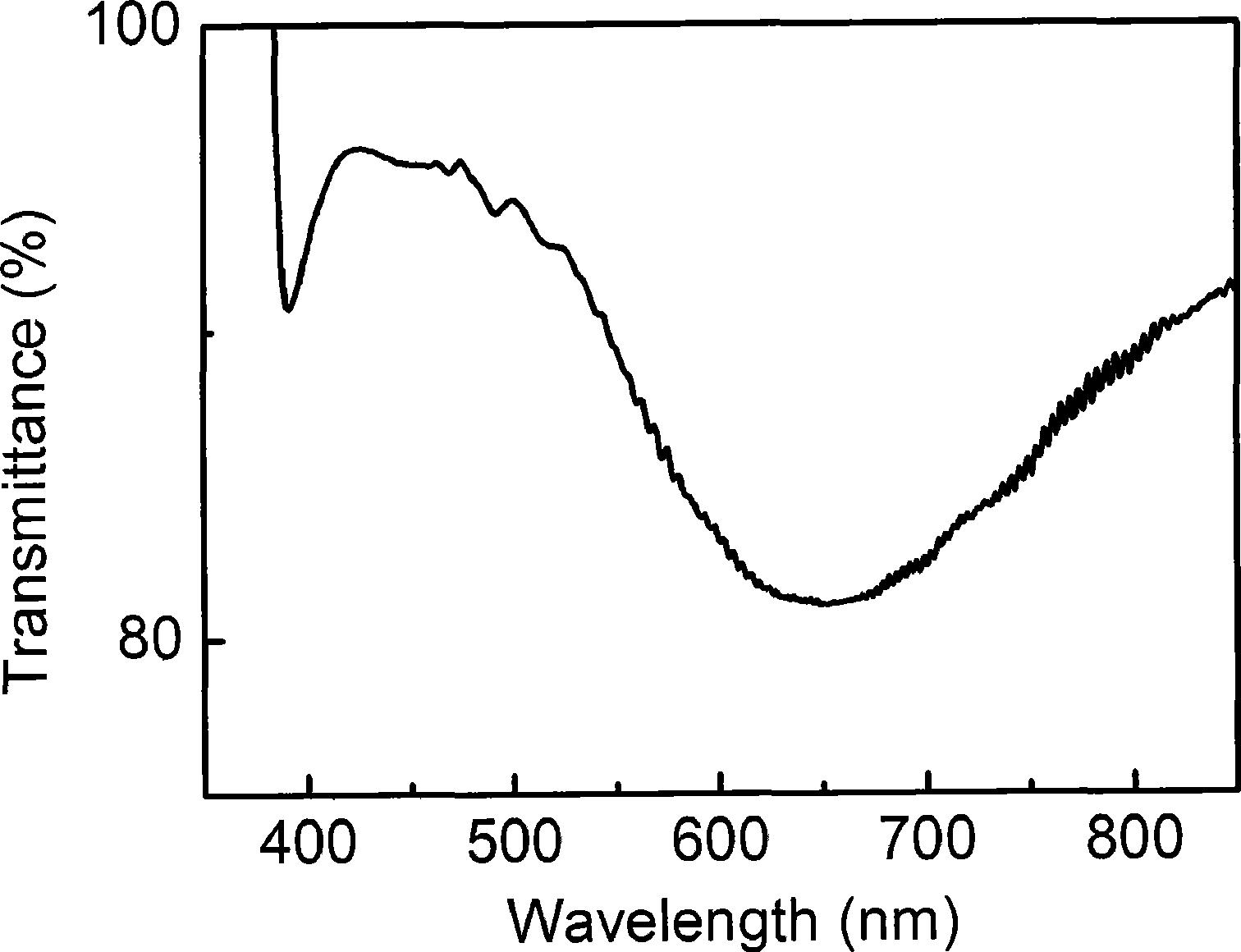Substrate for flexible organic optoelectric device and preparation thereof
A technology for optoelectronic devices and substrates, which is applied in the fields of electro-solid devices, semiconductor/solid-state device manufacturing, photovoltaic power generation, etc., can solve problems such as poor adhesion between conductive films and substrates, reduce production costs and process difficulties, and achieve excellent results. The effect of improving flatness
- Summary
- Abstract
- Description
- Claims
- Application Information
AI Technical Summary
Problems solved by technology
Method used
Image
Examples
Embodiment 1
[0102] Such as figure 1 As shown in the substrate structure, the flexible substrate 1 adopts a flexible polyethylene terephthalate polymer (PET) substrate, the adhesive layer 2 adopts a single-layer structure, and the conductive film 3 is ITO transparent and conductive by DC magnetron sputtering. film. The transmittance test curve is as figure 2 shown.
[0103] The preparation method is as follows:
[0104] ①Use detergent, acetone solution, ethanol solution and deionized water to ultrasonically clean the PET substrate, and dry it with dry nitrogen after cleaning;
[0105] ② Stir the adhesive diluted 1:10 with ethanol for 20 hours, then spin-coat on the PET surface at a speed of 2000 rpm for one minute, and the film thickness is about 100 nanometers.
[0106] Wherein the ratio of adhesive raw material components is:
[0107] Polythiol-polyene system 95%
[0108] Monofunctional or polyfunctional acrylic acid 1%
[0109] Photoinitiator 1.5%
[0110] Photosensitizers and ...
Embodiment 2
[0116] Such as figure 1 In the shown substrate structure, the flexible substrate 1 is made of a flexible metal foil, the adhesive layer 2 is made of a single-layer adhesive, and the conductive film 3 is an ITO transparent conductive film made by DC magnetron sputtering.
[0117] The preparation method is as follows:
[0118] ①Use detergent, acetone solution, ethanol solution and deionized water to ultrasonically clean the flexible metal foil, and dry it with dry nitrogen after cleaning;
[0119] ② Stir the adhesive diluted 1:1 with ethanol for 30 hours, then spin-coat it on the surface of the flexible metal foil at a speed of 3000 rpm for 1 minute, and the film thickness is about 200 nanometers;
[0120] Wherein the ratio of adhesive raw material components is:
[0121] Polythiol-polyene system 98%
[0122] Monofunctional or polyfunctional acrylic acid 1.5%
[0123] Photoinitiator 1.5%
[0124] Photosensitizers and additives 2%
[0125] ③UV curing treatment on the surfac...
Embodiment 3
[0129] Such as figure 1 In the substrate structure shown, the flexible substrate 1 is a PET substrate, the bonding layer 2 is a single-layer adhesive, and the conductive film 3 is a metal conductive film prepared by thermal evaporation.
[0130] ①Use detergent, acetone solution, ethanol solution and deionized water to ultrasonically clean the surface of the PET substrate, and dry it with dry nitrogen after cleaning;
[0131] ② Stir the adhesive diluted 1:10 with ethanol for 20 hours, then spin-coat on the PET surface at a speed of 2000 rpm for one minute, and the film thickness is about 100 nanometers;
[0132] ③Irradiate the surface of the substrate with ultraviolet light for 30 seconds;
[0133] ④Put the substrate into a vacuum chamber, and evaporate a 100nm thick metal conductive film on the surface of the PET substrate by thermal evaporation at room temperature;
[0134] ⑤After taking the substrate out of the vacuum chamber, irradiate with ultraviolet light for 60 second...
PUM
 Login to View More
Login to View More Abstract
Description
Claims
Application Information
 Login to View More
Login to View More - R&D
- Intellectual Property
- Life Sciences
- Materials
- Tech Scout
- Unparalleled Data Quality
- Higher Quality Content
- 60% Fewer Hallucinations
Browse by: Latest US Patents, China's latest patents, Technical Efficacy Thesaurus, Application Domain, Technology Topic, Popular Technical Reports.
© 2025 PatSnap. All rights reserved.Legal|Privacy policy|Modern Slavery Act Transparency Statement|Sitemap|About US| Contact US: help@patsnap.com



